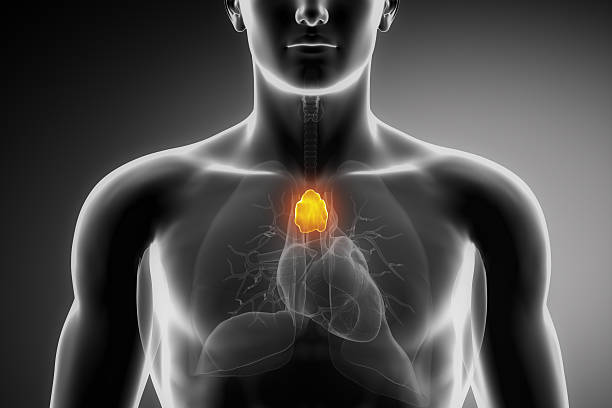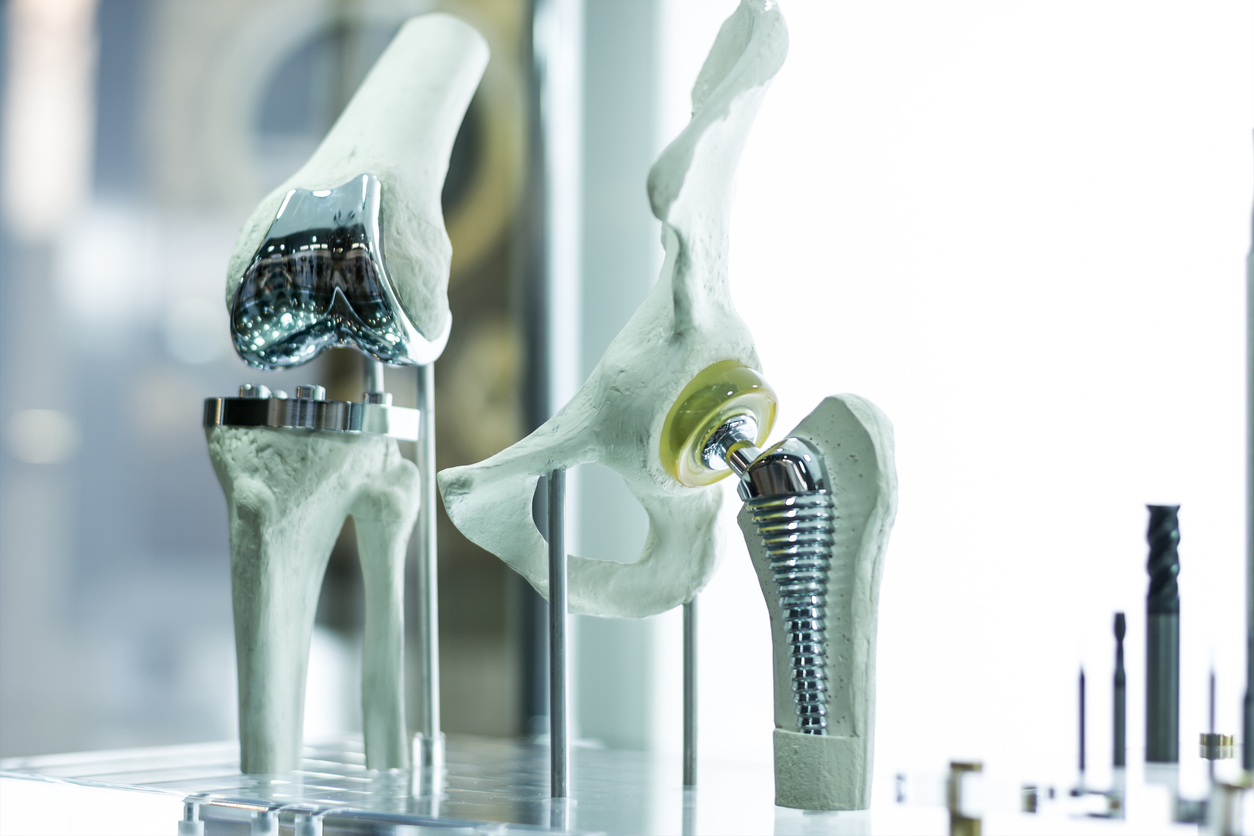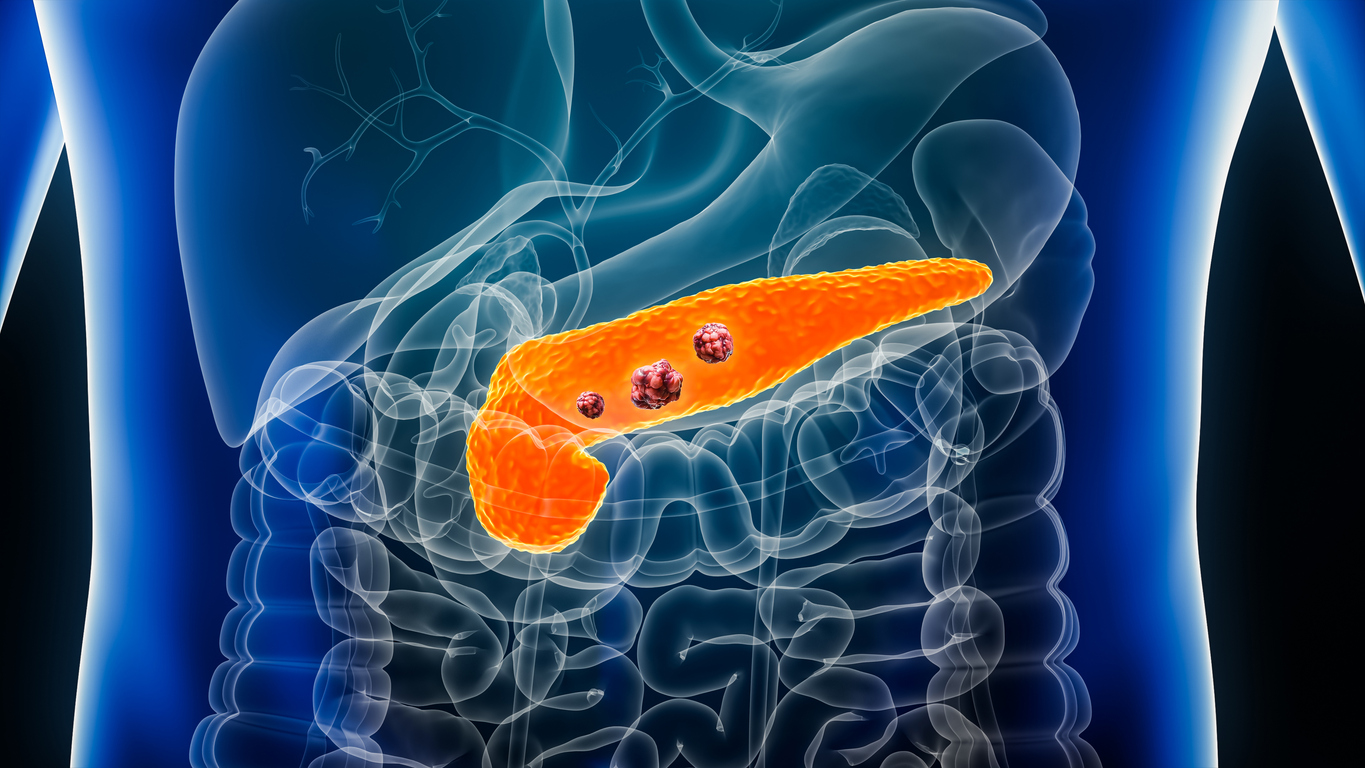Press reviews
The renin-angiotensin system is a hormonal system that regulates blood pressure. In addition to controlling blood pressure, this hormonal system interacts in a complex way with the dopaminergic system. This interaction is of particular interest in the context of neurodegeneration, notably Parkinson's disease.
The main protein of the renin-angiotensin system, angiotensin II, acts via two main G protein-coupled receptors, AT1 and AT2. Activation of the AT1 receptor is associated with pro-oxidative and pro-inflammatory effects. These effects promote oxidative stress and neurological inflammation, which are strongly implicated in the pathogenesis of Parkinson's disease. Conversely, activation of the AT2 receptor limits oxidative stress and neurological inflammation.
A dysregulation of the renin-angiotensin system, more specifically an imbalance in favor of the pro-oxidative/pro-inflammatory axis, has been observed in several animal models and patients with Parkinson's disease. It has been correlated with accelerated progression of dopaminergic neuron degeneration.
Activation of the anti-oxidative axis by the AT2 receptor or inhibition of the pro-oxidative axis appear to be important therapeutic strategies in the fight against Parkinson's disease.
In conclusion, the renin-angiotensin system plays a crucial role in the regulation of neurodegenerative processes. It could be a promising target for the development of therapeutic strategies aimed at attenuating the progression of Parkinson's disease.
In conclusion, the renin-angiotensin system plays a crucial role in the regulation of neurodegenerative processes. It could be a promising target for the development of therapeutic strategies aimed at attenuating the progression of Parkinson's disease.

Mesenchymal stem cells play a crucial role in tissue regeneration and immune system modulation. They secrete bioactive factors involved in tissue repair and inflammation reduction. They are particularly important in the fight against thymus aging.
With age, the thymus undergoes an involution characterized by reduced lymphocyte production. This is due to a reduced number of thymic epithelial cells.
In this study, aged macaques were treated with mesenchymal stem cells. The methodological approach involved administration of these mesenchymal stem cells by intravenous injection into the femoral vein. The changes induced by these cells were assessed using histological and molecular methods such as hematoxylin and eosin staining, immunofluorescence and ELISA assays.
The results showed a significant improvement in thymus structure and function in these aged macaques. DNA methylation analyses revealed significant epigenetic modifications. Methylation was increased in regions of 501 genes and decreased in regions of 591 genes. These epigenetic modifications were associated with either negative or positive regulation of cell growth and proliferation.
Mesenchymal stem cells can reverse the signs of thymic aging through targeted epigenetic modifications. The underlying molecular mechanisms include adjustments in DNA methylation profiles that regulate gene expression in thymic epithelial cells. These adjustments reduce cell apoptosis.
Promising new strategy to combat thymus aging...

2024-04-11
The beneficial effects of an active lifestyle on digestive and liver health
Gastroenterology and Hepatology
Regular physical activity is highly recommended for a healthy heart, mind and body. Sufficient physical activity helps maintain a healthy body weight, reduce inflammation and improve metabolism. It helps prevent or better treat most illnesses, such as gastrointestinal and liver diseases. Conversely, a sedentary lifestyle encourages the onset of these diseases.
In this study, researchers used a Mendelian randomization method to analyze the correlation between physical activity, sedentary behavior and gastrointestinal and liver diseases.
A genome-wide association study identified screen time as an indicator of a sedentary lifestyle, and moderate-to-vigorous physical activity. Multivariable Mendelian randomization was used to adjust for possible cross-effects and confounding factors such as smoking and alcohol consumption.
In this study, researchers used a Mendelian randomization method to analyze the correlation between physical activity, sedentary behavior and gastrointestinal and liver diseases.
A genome-wide association study identified screen time as an indicator of a sedentary lifestyle, and moderate-to-vigorous physical activity. Multivariable Mendelian randomization was used to adjust for possible cross-effects and confounding factors such as smoking and alcohol consumption.
The results of this study indicated that longer exposure to screens was associated with an increased risk of developing several gastrointestinal diseases such as gastro-oesophageal reflux disease, gastric and duodenal ulcers, chronic gastritis and various liver diseases.
Conversely, regular moderate-to-vigorous physical activity was associated with a lower prevalence of developing these diseases.
These associations were validated by several robust sensitivity analyses, reinforcing the validity of the conclusions. Several complementary approaches were also taken to ensure the robustness of these results.
These results highlight the importance of regular physical activity and active behavior in preventing various gastrointestinal and liver diseases. Physicians are encouraged to advise their patients to adopt an active lifestyle to improve their gastrointestinal and liver health.
These associations were validated by several robust sensitivity analyses, reinforcing the validity of the conclusions. Several complementary approaches were also taken to ensure the robustness of these results.
These results highlight the importance of regular physical activity and active behavior in preventing various gastrointestinal and liver diseases. Physicians are encouraged to advise their patients to adopt an active lifestyle to improve their gastrointestinal and liver health.

Sarcopenia, often defined as the progressive loss of
muscle mass and strength, represents a growing public health challenge,
particularly in the elderly. This geriatric syndrome is associated with an
increased risk of falls, reduced quality of life and increased mortality.
Although several factors are involved, including physical inactivity and aging,
diet appears to play a crucial role in the prevention and management of
sarcopenia.
A recent cross-sectional study from southern Italy explored the relationship between dietary patterns and sarcopenia in adults aged 50 and over, with a particular focus on the Mediterranean diet. This study included 528 individuals who underwent testing at the clinical nutrition unit of the "R.Dulbecco" University Hospital. Strength was assessed using hand grip strength. Appendicular skeletal muscle mass was estimated using bioelectrical impedance analysis. Information on food intake was collected using a food frequency questionnaire.
The results of this study revealed four distinct dietary patterns:
- A 'Western' model
- A 'Mediterranean' model
- A 'High-fat' model
- A 'Carnivorous' model
Only the "Western" and "Mediterranean" models showed correlations with grip strength and appendicular skeletal muscle mass. Notably, the Mediterranean model was significantly associated with better grip strength and higher muscle mass. This model showed a negative correlation with sarcopenia. High adherence to the Mediterranean model was associated with a significant reduction in the prevalence of sarcopenia, compared with low adherence.
Adjusted multinomial logistic regression analysis confirmed these associations. This analysis showed that low adherence to the Mediterranean model was significantly associated with a higher prevalence of sarcopenia.
These results underline the importance of high adherence to the Mediterranean diet for the prevention of sarcopenia in the elderly.
In conclusion, this study reinforces the notion that the Mediterranean diet, rich in vegetables, fruit, legumes, cereals, with limited consumption of meat and dairy products, plays a key role in the prevention of sarcopenia in older adults.
A recent cross-sectional study from southern Italy explored the relationship between dietary patterns and sarcopenia in adults aged 50 and over, with a particular focus on the Mediterranean diet. This study included 528 individuals who underwent testing at the clinical nutrition unit of the "R.Dulbecco" University Hospital. Strength was assessed using hand grip strength. Appendicular skeletal muscle mass was estimated using bioelectrical impedance analysis. Information on food intake was collected using a food frequency questionnaire.
The results of this study revealed four distinct dietary patterns:
- A 'Western' model
- A 'Mediterranean' model
- A 'High-fat' model
- A 'Carnivorous' model
Only the "Western" and "Mediterranean" models showed correlations with grip strength and appendicular skeletal muscle mass. Notably, the Mediterranean model was significantly associated with better grip strength and higher muscle mass. This model showed a negative correlation with sarcopenia. High adherence to the Mediterranean model was associated with a significant reduction in the prevalence of sarcopenia, compared with low adherence.
Adjusted multinomial logistic regression analysis confirmed these associations. This analysis showed that low adherence to the Mediterranean model was significantly associated with a higher prevalence of sarcopenia.
These results underline the importance of high adherence to the Mediterranean diet for the prevention of sarcopenia in the elderly.
In conclusion, this study reinforces the notion that the Mediterranean diet, rich in vegetables, fruit, legumes, cereals, with limited consumption of meat and dairy products, plays a key role in the prevention of sarcopenia in older adults.

In this secondary analysis of a single-center prospective registry, data from 2,411 infants were included, 76 of whom were diagnosed with invasive infections. The aim of the study was to analyze the performance of commonly used blood tests in febrile infants under 90 days of age. The researchers defined three groups of patients, based on the hours of fever reported by caregivers: less than 2 hours, between 2 and 12 hours, and more than 12 hours. The median duration of fever was 4 hours. The area under the curve was significantly lower in infants with fever lasting less than 2 hours for two biomarkers: absolute neutrophil count and C-reactive protein, but not for procalcitonin.
Source(s) :
Roberto Velasco et al. Performance of Febrile Infant Algorithms by Duration of Fever. Pediatrics. 2024 Apr 2:e2023064342
;

The 5-HT2A serotonin receptor is involved in both schizophrenia and the mode of action of antipsychotic drugs. While antipsychotic drugs have a certain efficacy in treating the symptoms of schizophrenia, they are associated with side effects, some of them major. To find out more about the mechanism of action of antipsychotic drugs, researchers have used bioluminescence resonance energy transfer (BRET) tests. They were able to work out the signaling signatures of six antipsychotic drugs, all acting on the 5-HT2A receptor. Risperidone, clozapine, olanzapine and haloperidol showed selective G-protein inverse agonist activity. In addition, selective partial G-protein agonism was observed for aripiprazole and cariprazine.

Menopausal hormone replacement therapy (HRT) is associated with a reduced risk of colorectal cancer. In this study, researchers analyzed data from 28,486 post-menopausal women, 11,519 of whom were treated with HRT. A polygenic score based on 141 genetic variants associated with colorectal cancer was modeled and its association with colorectal cancer risk assessed. The researchers calculated the cumulative 30-year risk of colorectal cancer in women aged 50, as a function of HRT use and colorectal cancer polygenic score. In women with the highest polygenic score, the 30-year risk of colorectal cancer was significantly lower when women were treated with HRT.

In long Covid, many symptoms are neurological, but the underlying brain disturbances remain poorly understood. In this study, researchers recruited 89 patients with persistent neurological symptoms after Covid-19 and 22 controls who had Covid-19 without persistent neurological symptoms. The data highlighted that 48% of patients with long Covid had episodic memory deficits, and 27% also had impaired global cognitive function, particularly attention, working memory, processing speed and verbal fluency. Compared with cured controls, patients with persistent neurological symptoms had a thinner cerebral cortex in the left posterior superior temporal gyrus. Other cerebral abnormalities were observed in these patients.

Does maternal antiviral prophylaxis impact mother-to-child transmission of hepatitis B virus in real life? Researchers analyzed data on maternal HBV screening, neonatal immunization and post-vaccination serologic testing in at-risk infants born to HBV-positive mothers. A total of 2,460,218 deliveries with maternal HBV status were screened. Among the 22,859 at-risk infants who received antiviral prophylaxis, mother-to-child transmission rates differed between infants born to HBs+/HBe- and HBe+ mothers. Overall, annual Hbe and Hbs seropositivity rates decreased between 2008 and 2022.

In this study, researchers evaluated the long-term impact (over a total period of 10 years) of breast cancer and its treatment on bone mineral density, particularly after discontinuation of treatment with an aromatase inhibitor. A total of 372 patients with pre- and post-menopausal breast cancer were included in the study. Discontinuation of the aromatase inhibitor at 5 years had a significant impact on bone mineral density. Bone mineral density increased in patients weaned off the aromatase inhibitor during the first 5 years, while a decrease in bone mineral density was observed in patients without aromatase inhibitor weaning.

2024-04-04
Effectiveness and feasibility of remote intervention in children with autism spectrum disorders
Pediatrics
In this study, researchers compared the efficacy, acceptability and feasibility of a creative movement intervention, delivered face-to-face or remotely, in 15 children with autism spectrum disorder. Children in both subgroups showed similar baseline performance and training-related improvements in motor skills, positive/interested affect, socially directed verbalization, interpersonal synchrony and dual/multi-limb coordination. Parents considered remote intervention feasible and acceptable, although they reported a greater effort to supervise and redirect their child's attention, compared with face-to-face intervention.

In order to better assess liver fibrosis, non-invasively and early on, researchers here have developed a new predictive score, called the LiverRisk. They evaluated the predictive performance and cost-effectiveness of the LiverRisk score for liver fibrosis and liver and diabetes-related mortality in the general population. Compared with conventional scores, the LiverRisk score had significantly better accuracy and calibration in predicting liver fibrosis. Based on this score, the researchers were able to differentiate three groups within the populations studied: low, medium and high risk. Compared to the low-risk group, the medium- and high-risk groups had a significantly higher risk of liver-related mortality and diabetes.

In this cohort study, researchers determined the impact of lower limb prostheses on patients' mobility and quality of life, depending on the level of initial damage and prosthesis sophistication. The study included 347 U.S. Army veterans with incident transtibial or transfemoral amputations due to diabetes and/or peripheral arterial disease who received knee or hip prostheses. Patients who received intermediate or advanced prostheses were more likely to achieve advanced mobility than those who received basic prostheses. The association was strongest with hip prostheses.

In patients with chronic rheumatic diseases, misleading symptoms can delay cancer diagnosis. In this study, researchers evaluated whether a metabolic signature could indicate paraneoplasia or reveal concomitant cancer in patients with rheumatic musculoskeletal disease. Metabolic markers were quantified in the sera of 56 patients with rheumatoid arthritis or ankylosing spondylitis and 52 patients without known rheumatic disease. A diagnostic cancer model was developed using levels of acetate, creatine, glycine, formate and the L1/L6 lipid ratio.

Researchers here have synthesized a prodrug, squalenoyl-chidamide, binding lipophilic squalene to the hydrophilic antitumor drug chidamide via trypsin-sensitive binding. The nanoparticles developed showed significantly higher in vitro drug release in 0.5% trypsin medium, compared with release in trypsin-free medium. In vitro cellular uptake tests revealed a two- to four-fold higher permeation of nanoparticles into the tumor spheres of pancreatic tumor cells. After intraperitoneal administration to mice with subcutaneous tumors, these nanoparticles demonstrated significant efficacy against pancreatic cancer, inducing apoptosis of cancer cells and inhibiting their proliferation in vivo.
